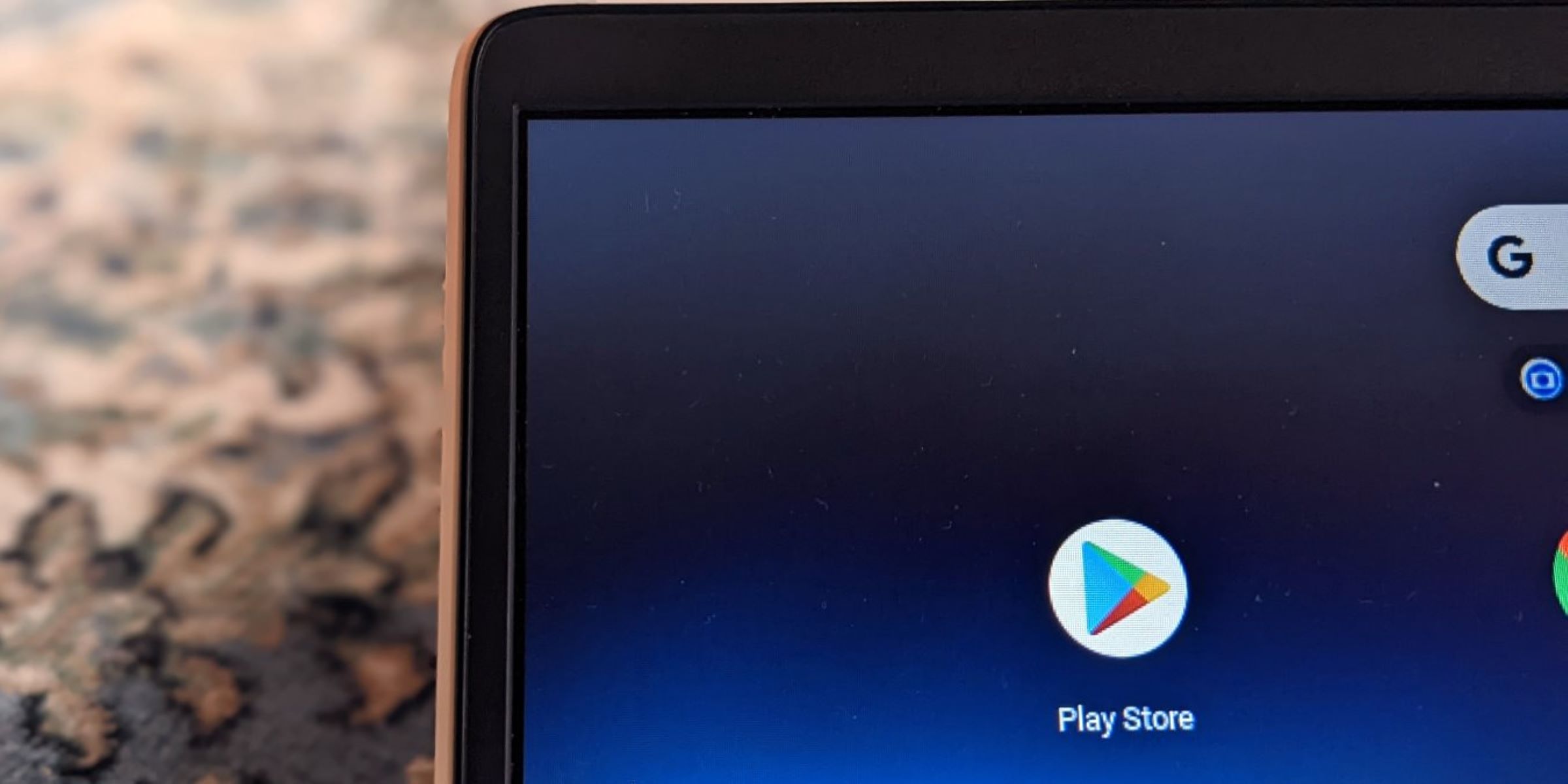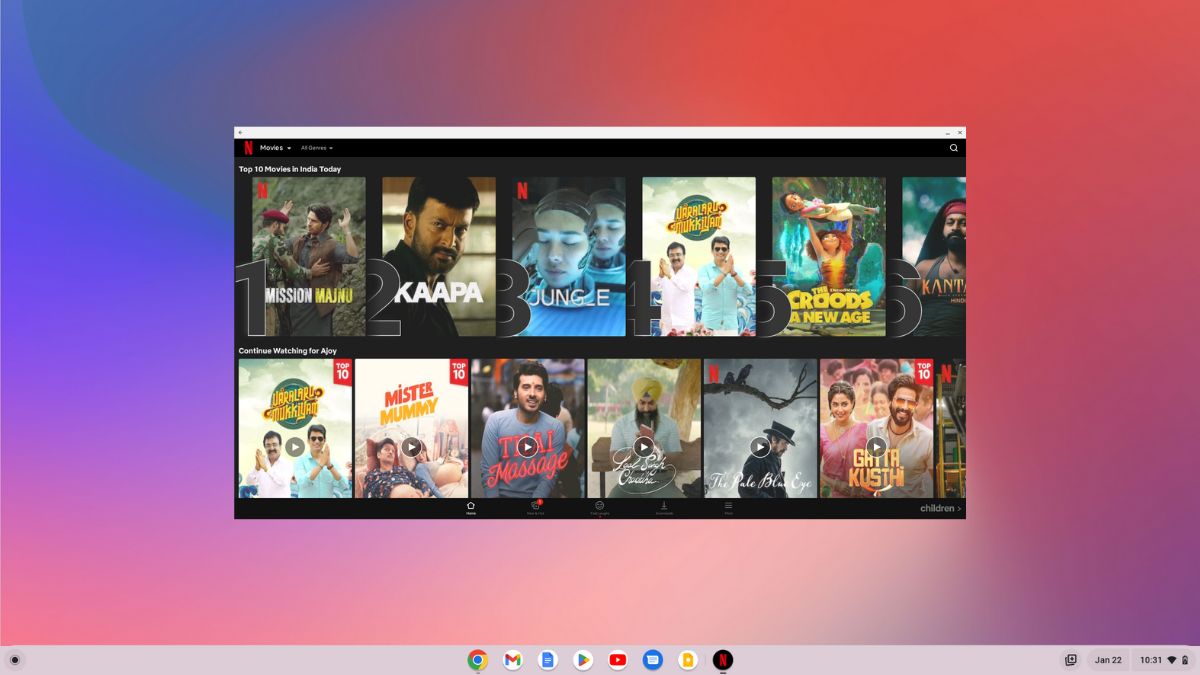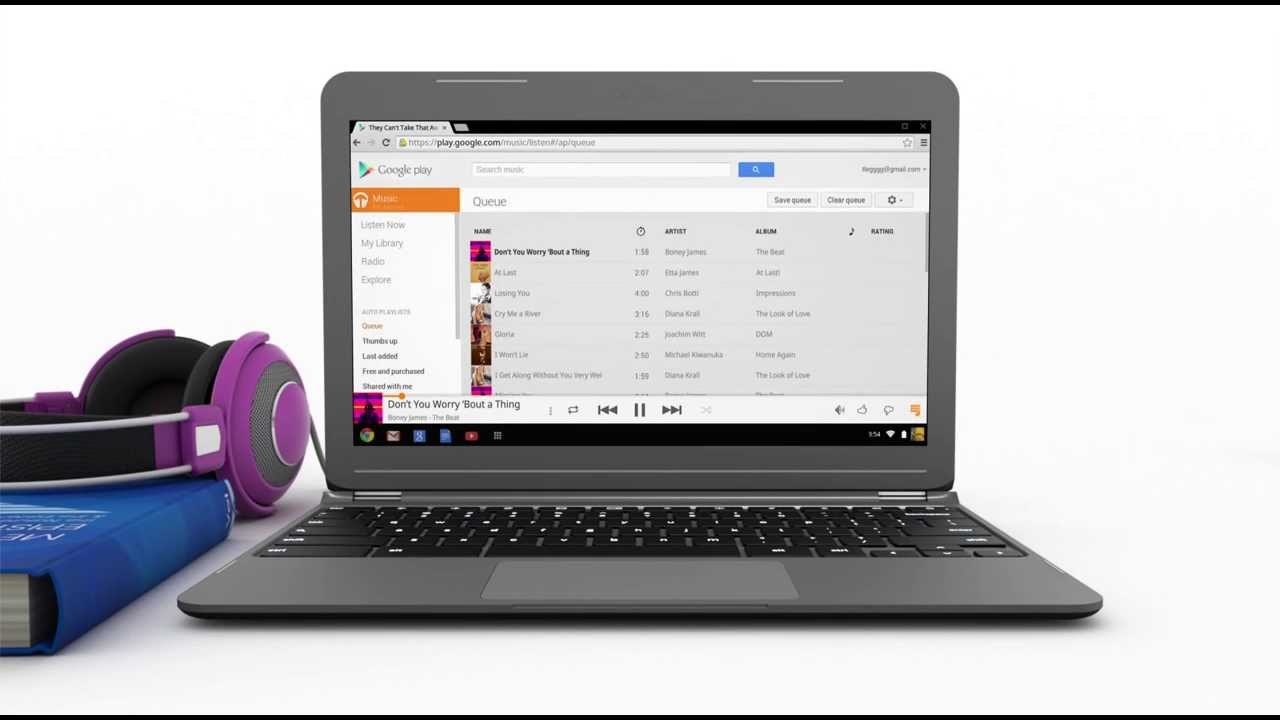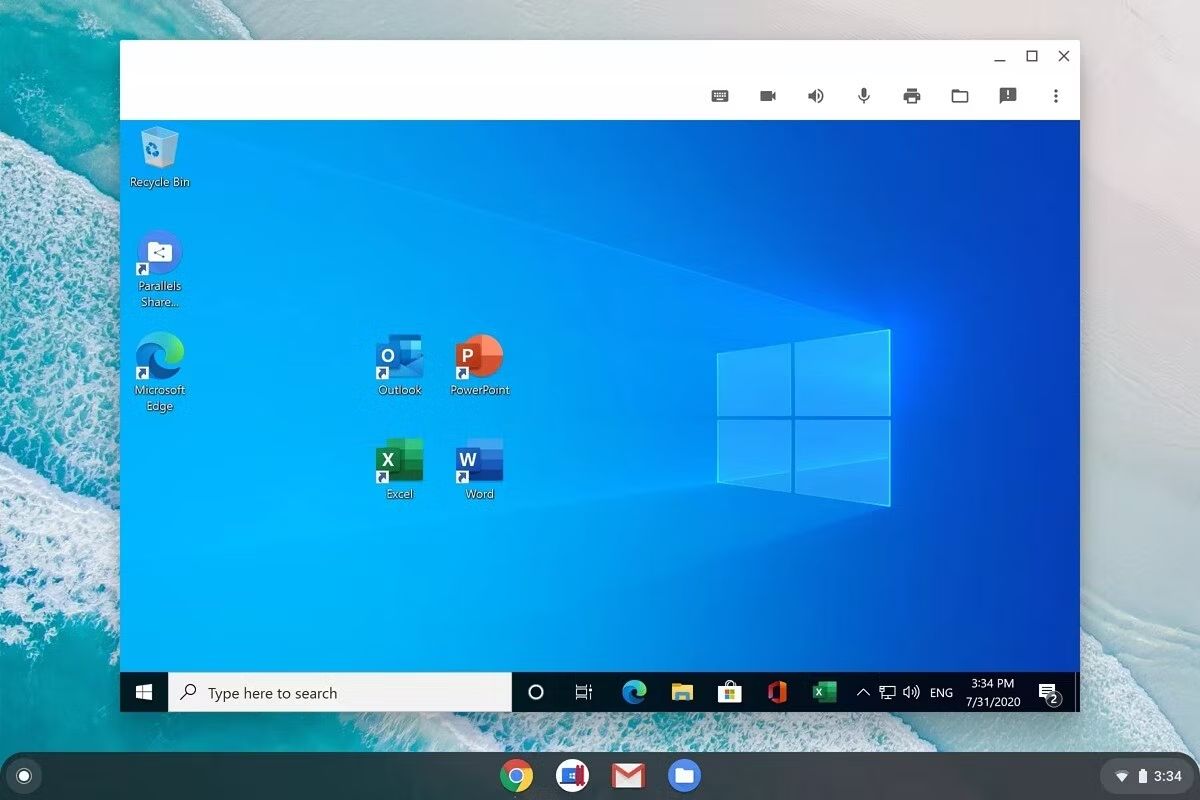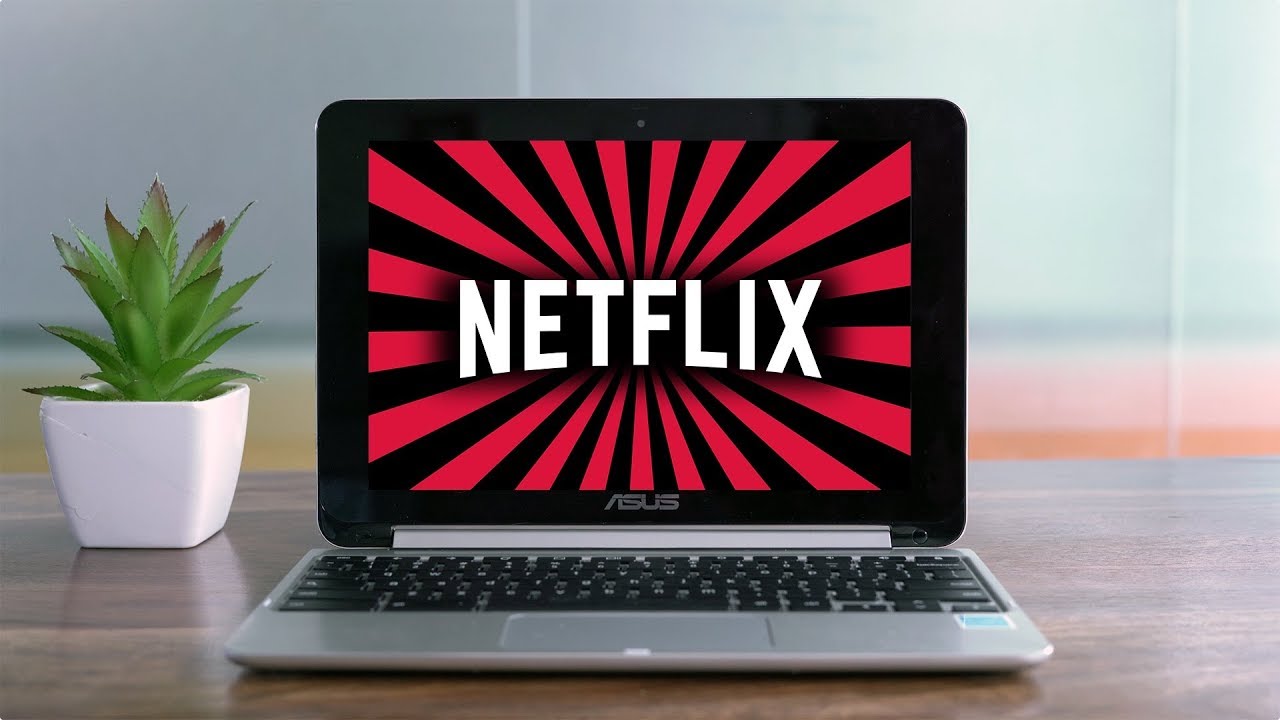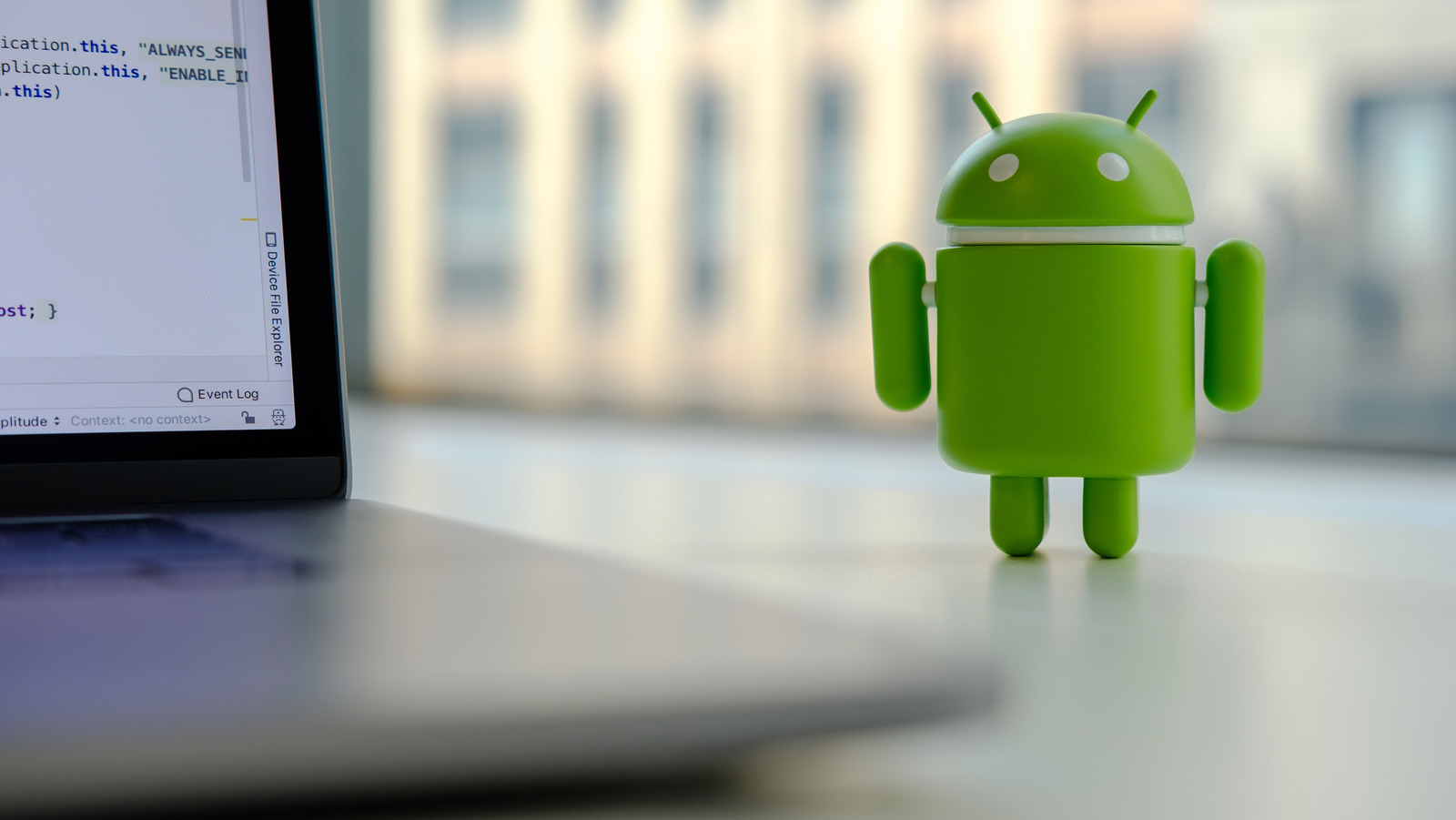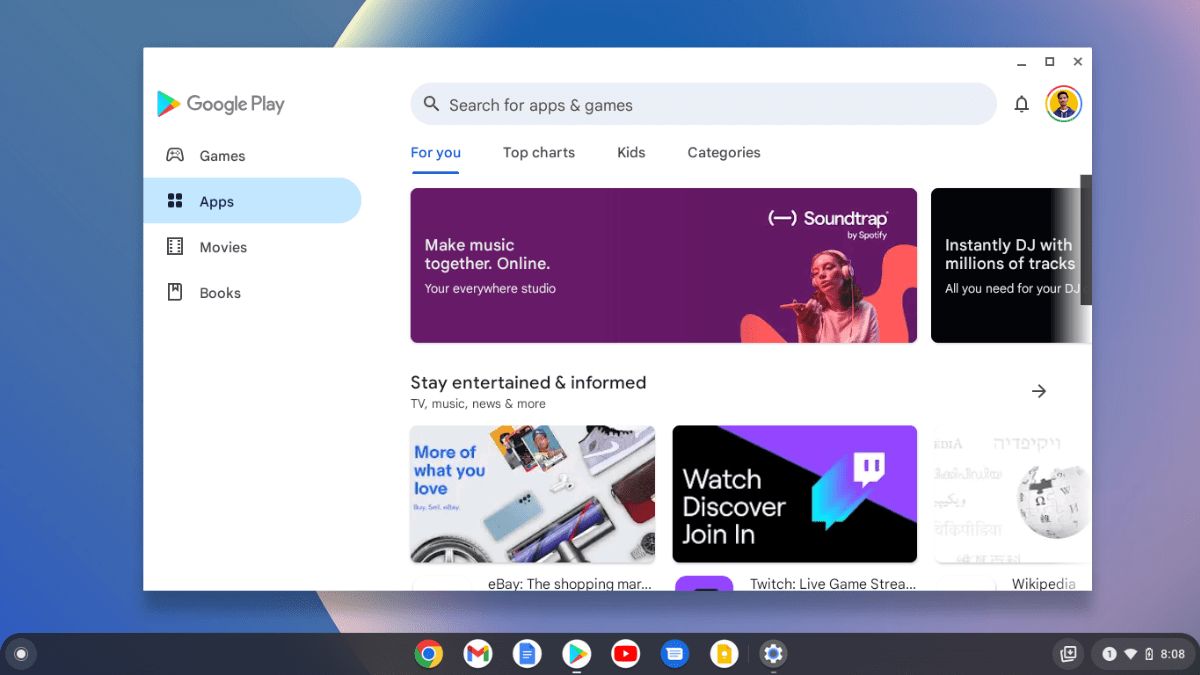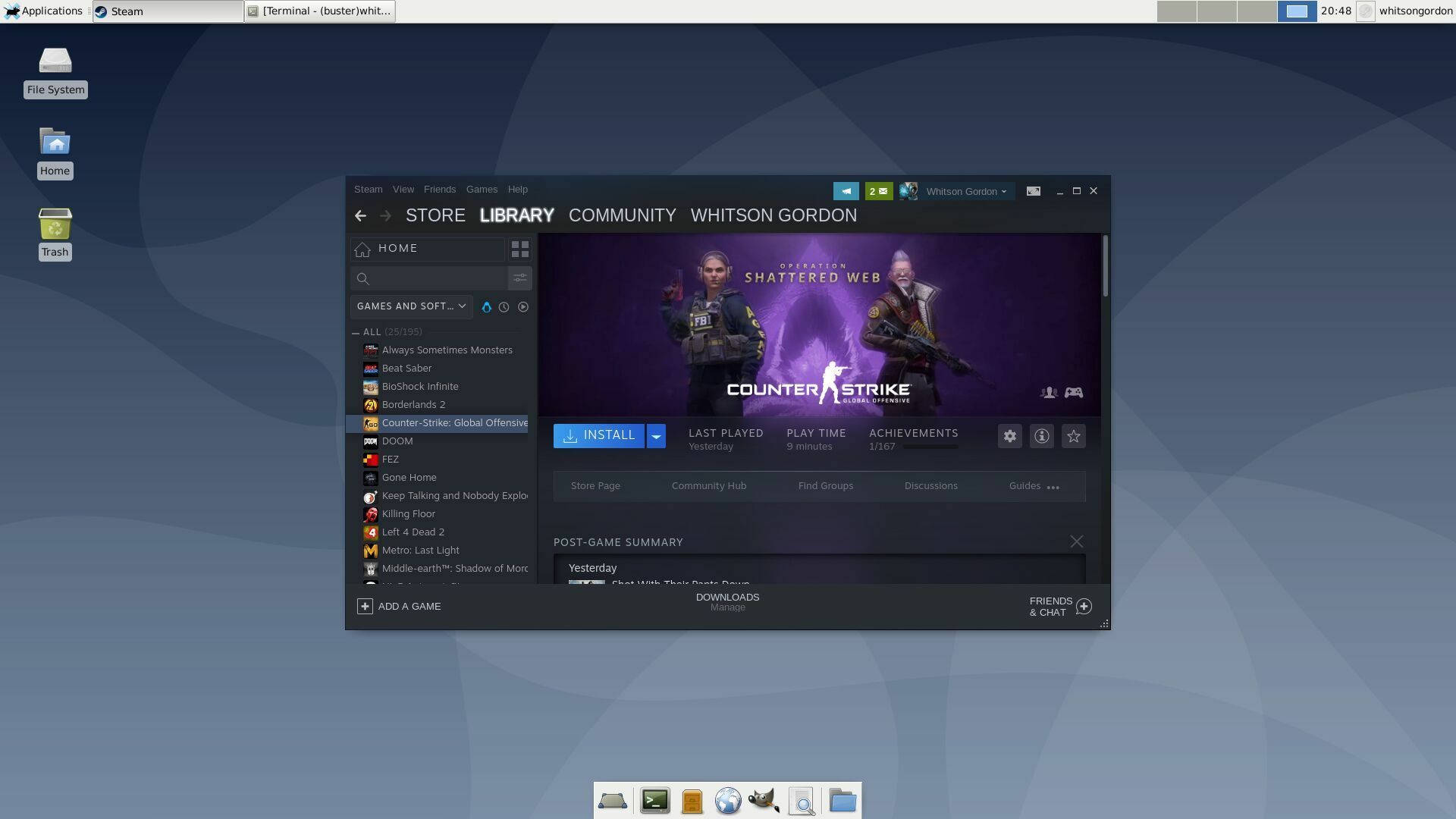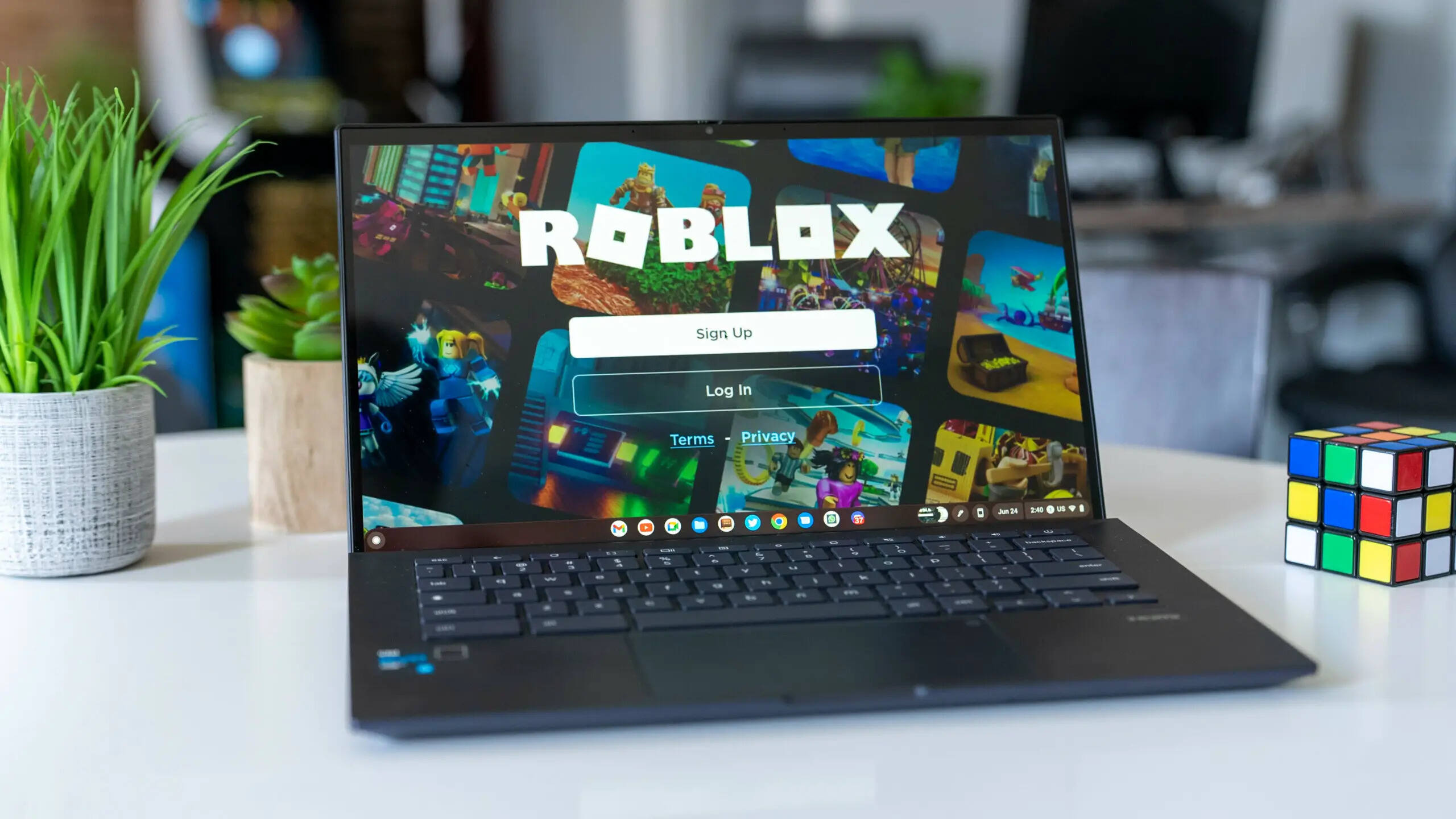Introduction
Welcome to the world of Chromebooks! If you’re new to this sleek and lightweight alternative to traditional laptops, you’re probably wondering how to make the most out of its capabilities. One key feature that you might be interested in is the ability to download and use apps from the Google Play Store. In this article, we’ll guide you through the process of downloading the Play Store on your Chromebook, opening up a world of possibilities at your fingertips.
Chromebooks are a unique breed of laptops, designed to deliver a seamless and user-friendly experience for users. They run on Chrome OS, a lightweight operating system developed by Google, which offers fast boot times, automatic updates, and built-in virus protection. Chromebooks are known for their simplicity, reliability, and affordability, making them a popular choice for students, professionals, and anyone looking for a hassle-free computing experience.
The Google Play Store, on the other hand, is a digital marketplace where users can download a vast array of apps, games, books, movies, and more. Originally exclusive to Android devices, the Play Store has now made its way to Chromebooks, expanding their functionality and giving users access to a vast library of apps for productivity, entertainment, creativity, and much more.
But why should you bother downloading the Play Store on your Chromebook? The answer is simple: it opens up a world of possibilities. Whether you need a productivity app to manage your tasks, a photo editing tool to enhance your images, a game to keep you entertained during breaks, or an educational app to broaden your knowledge, the Play Store has got you covered.
By following a few simple steps, you can enable the Play Store on your Chromebook and start enjoying the wide range of apps and services available. In the next few sections, we’ll walk you through the process, ensuring that you can take full advantage of the Play Store on your Chromebook.
What is a Chromebook?
A Chromebook is a type of laptop that runs on the Chrome operating system (Chrome OS), developed by Google. Unlike traditional laptops that rely heavily on installed software, Chromebooks primarily utilize web-based applications and cloud storage. This means that most of the tasks and applications are accessed through a web browser, providing a streamlined and efficient computing experience.
Chromebooks are known for their lightweight and portable design, making them ideal for people on the go. They are often thinner and lighter compared to traditional laptops, with longer battery life to keep you productive throughout the day. The focus of Chromebooks is on simplicity, speed, and ease of use, which makes them an excellent choice for students, professionals, or anyone who values convenience.
One of the standout features of Chromebooks is their near-instant boot-up time. Thanks to the efficient Chrome OS, your Chromebook can start up within seconds, allowing you to quickly jump into your work or leisure activities without any delay. This speediness extends to web browsing and app loading as well, providing a smooth and snappy user experience.
Chromebooks also come with built-in security features. The Chrome OS is designed with security in mind, with automatic updates and built-in virus protection to keep your device safe from malware and other online threats. Additionally, each user on a Chromebook has their own profile, ensuring privacy and separation of data between different users.
One of the main differences between Chromebooks and traditional laptops is the storage system. Chromebooks rely on cloud storage, allowing you to store your files, photos, and documents on remote servers instead of locally on the device. This cloud-based storage system provides the advantage of easy access to your files from any device with an internet connection, while also freeing up storage space on your Chromebook.
Overall, a Chromebook is a modern and efficient laptop designed for simplicity, speed, and security. With their lightweight design, fast performance, and access to a wide range of web-based apps, they offer a convenient and hassle-free computing experience for users of all types.
What is the Play Store?
The Play Store, officially known as Google Play, is a digital marketplace created by Google that serves as a hub for Android users to download and access various types of digital content. It is the go-to destination for millions of Android smartphone and tablet users around the world, offering a vast library of apps, games, books, movies, TV shows, and music.
With over 2.5 million apps and counting, the Play Store provides a wide range of options for users to customize their Android devices and enhance their mobile experience. Whether you’re looking for productivity tools, social media apps, entertainment apps, fitness trackers, or anything in between, chances are you’ll find what you need on the Play Store.
One of the remarkable features of the Play Store is its extensive collection of apps. Developers from all over the world submit their applications to Google for review and distribution through the Play Store. This means you have access to a diverse range of apps catering to various interests and needs.
In addition to apps, the Play Store also offers a vast selection of digital entertainment content. Users can browse and purchase books, rent or buy movies and TV shows, and enjoy streaming music from their favorite artists. The Play Store serves as a one-stop shop for all your digital content needs, providing you with access to an extensive collection of options to keep you entertained and informed.
Another notable aspect of the Play Store is its robust rating and review system. Users can rate and provide feedback on apps they have downloaded, helping others make informed decisions about which apps to try. This feature allows you to see the experiences and opinions of others before downloading an app, ensuring that you can make choices based on user reviews and recommendations.
With regular updates and improvements, the Play Store continues to evolve, offering new features and enhancing the user experience. Google ensures that the Play Store remains a reliable and secure platform, providing users with a seamless and safe environment to explore and download apps and digital content.
Overall, the Play Store is an essential part of the Android ecosystem, offering a vast and diverse collection of apps and digital content to enhance the functionality and enjoyment of Android devices. It’s a platform that provides endless possibilities, allowing users to personalize their devices and access the latest and greatest offerings in the digital world.
Why download the Play Store on a Chromebook?
Downloading the Play Store on your Chromebook opens up a whole new world of possibilities and enhances the functionality of your device. Here are several reasons why you should consider downloading the Play Store on your Chromebook:
- Access to a huge library of apps: The Play Store offers access to millions of apps, including popular titles and essential tools. By downloading the Play Store, you can customize your Chromebook with productivity apps, games, entertainment apps, educational tools, and much more.
- Expanded productivity: With the Play Store on your Chromebook, you can use apps like Microsoft Office, Adobe Photoshop, and Slack to boost your productivity. This allows you to work with familiar tools and access additional features that may not be available in browser-based applications.
- Entertainment on the go: The Play Store is a treasure trove of entertainment options. You can download apps for streaming movies and TV shows, listening to music, playing games, reading books, and much more. Transform your Chromebook into a portable entertainment hub and enjoy endless entertainment options wherever you go.
- Improved offline capabilities: Many apps from the Play Store offer offline functionality, allowing you to use them even when you don’t have an internet connection. From productivity apps like Google Docs and Evernote to games and media players, you can stay productive and entertained even when you’re offline.
- Broader app compatibility: While Chrome OS has its own set of web-based applications, there may be certain apps or services that are only available on Android. By downloading the Play Store, you can enjoy the full range of Android apps, giving you access to a wider range of options and ensuring compatibility with apps you may already be using on your mobile device.
- Continuity across devices: If you already use an Android smartphone or tablet, having the Play Store on your Chromebook allows for seamless integration and synchronization across devices. You can access the same apps, settings, bookmarks, and files across all your devices, making it easier to switch between them without missing a beat.
By downloading the Play Store on your Chromebook, you unlock a whole new level of versatility, productivity, and entertainment. It expands the capabilities of your device, allowing you to personalize it to your needs and access a vast array of apps and digital content. Whether you’re a student, a professional, or someone who simply wants to make the most out of their Chromebook, the Play Store is a valuable addition that enhances your overall computing experience.
Step 1: Ensure Chromebook compatibility
Before proceeding with downloading the Play Store on your Chromebook, it’s essential to ensure compatibility between your device and the Play Store. Here’s how you can check if your Chromebook is compatible:
- Check for Chrome OS updates: Make sure your Chromebook is running the latest version of Chrome OS. To do this, click on the status area in the bottom-right corner of your screen, then click on the settings gear icon. From there, navigate to “About Chrome OS” and click on “Check for updates”. If there are any available updates, let them install and make sure your Chromebook is up-to-date.
- Verify device compatibility: Not all Chromebook models can run the Play Store. Visit the official Google support page for Chromebook models that support Android apps (https://support.google.com/chromebook/answer/7021273) and check if your specific model is listed. If your device is not on the list, unfortunately, it does not support the Play Store.
- Enable developer mode (optional): If you have a compatible Chromebook but the Play Store is not yet available in the stable channel, you may need to enable developer mode. However, keep in mind that enabling developer mode will erase all local data on your device. To enable developer mode, hold down the “Esc” and “Refresh” keys, then press the power button. When the “Chrome OS is missing or damaged” screen appears, press “Ctrl+D” and follow the instructions on the screen to enter developer mode.
By ensuring compatibility between your Chromebook and the Play Store, you can avoid any potential issues and ensure a smooth installation process. Once you’ve verified that your Chromebook is compatible, you can proceed to the next steps to enable and install the Play Store on your device.
Step 2: Enable the Play Store on your Chromebook
Once you’ve confirmed the compatibility of your Chromebook, the next step is to enable the Play Store on your device. Follow these steps to enable the Play Store:
- Go to Chrome OS settings: Click on the status area in the bottom-right corner of your screen, then click on the settings gear icon. Alternatively, you can type “chrome://settings/” in the Chrome browser’s address bar and press Enter.
- Navigate to the “Google Play Store” settings: In the Settings menu, scroll down and click on “Apps” in the left sidebar. Then, click on “Google Play Store” in the main window.
- Enable the Play Store: In the Google Play Store settings, check the box next to “Enable Google Play Store on your Chromebook.” You’ll see a warning pop-up message informing you that enabling the Play Store will require the download of several gigabytes of data. Click on “Enable” to proceed.
- Accept the terms of service: After enabling the Play Store, a dialog box will appear with the terms of service. Read through the terms and click on “Accept” to continue.
- Wait for the Play Store to install: Once you’ve accepted the terms, the Play Store will start installing on your Chromebook. This process may take a few minutes, so be patient and allow it to complete.
- Restart your Chromebook: Once the installation is complete, you’ll see the Play Store icon in your app launcher. To ensure that everything is properly set up, it’s recommended to restart your Chromebook before using the Play Store.
By following these steps, you will successfully enable the Play Store on your Chromebook, bringing a whole new level of functionality and versatility to your device. Now, you’re all set to explore the vast library of apps available and make the most out of your Chromebook’s capabilities.
Step 3: Install the Play Store on your Chromebook
After enabling the Play Store on your Chromebook, the next step is to actually install it on your device. Follow these steps to install the Play Store:
- Open the Play Store: Locate the Play Store icon in your app launcher and click on it to open the Play Store.
- Sign in to your Google account: If you’re not already signed in, you will be prompted to sign in to your Google account. Enter your Google account credentials to proceed.
- Agree to the terms of service: After signing in, you may be presented with the terms of service for the Play Store. Read through the terms and click on “Accept” to continue.
- Explore and search for apps: Once you’ve accepted the terms, you can start exploring the Play Store. Browse through categories or use the search bar to find specific apps. You can also view top charts and editor’s picks for app recommendations.
- Select an app: When you find an app you want to install, click on it to view more details. You can read descriptions, check ratings and reviews, and see screenshots or videos of the app to help you make an informed decision.
- Click on “Install”: If you decide to proceed with the installation, click on the “Install” button. The app will begin downloading and installing on your Chromebook.
- Access your installed apps: Once the app is installed, its icon will appear in your app launcher. You can access it by clicking on the launcher icon in the bottom-left corner of your screen, then clicking on the app’s icon.
- Manage your installed apps: To manage your installed apps, go to the “My apps & games” section in the Play Store menu. From there, you can view all your installed apps, update them, or uninstall them if needed.
By following these steps, you can successfully install the Play Store on your Chromebook and start enjoying the vast collection of apps available. Whether you’re looking for productivity tools, entertainment apps, games, or any other type of app, the Play Store has something for everyone to enhance their Chromebook experience.
Step 4: Sign in to your Google account
In order to fully access and utilize the features of the Play Store on your Chromebook, it is necessary to sign in to your Google account. Follow these steps to sign in:
- Open the Play Store: Locate the Play Store icon in your app launcher and click on it to open the Play Store application on your Chromebook.
- Click on the profile icon: In the top-right corner of the Play Store interface, you will see a small circular icon. Click on it to proceed.
- Select or add your Google account: If you’ve signed in to your Google account on your Chromebook previously, you should see your account listed here. Simply click on it to sign in. If you haven’t yet signed in, click on “Add account” and follow the on-screen instructions to add your Google account.
- Enter your password: After selecting or adding your Google account, you will be prompted to enter your password. Type in the password associated with your Google account and click “Next” to proceed.
- Set up account preferences (optional): Depending on your account settings and preferences, you may be prompted to choose backup and sync options, privacy settings, and other preferences. Follow the on-screen instructions to set up your preferences or skip this step if you prefer to do it later.
- Confirmation: Once you’ve entered your password and configured any necessary preferences, your Google account is now signed in and associated with the Play Store on your Chromebook.
Signing in to your Google account allows you to access your purchased apps, synchronize app data across devices, and benefit from personalized recommendations based on your usage and preferences. It also provides a seamless experience across your Chromebook and other devices linked to your Google account.
Now that you’re signed in, you can explore the Play Store and enjoy a wide range of apps, games, books, movies, and more on your Chromebook.
Step 5: Explore and download apps from the Play Store
Now that you’ve signed in to your Google account and have the Play Store enabled on your Chromebook, it’s time to explore the vast collection of apps available and start downloading the ones that suit your needs. Follow these steps to discover and download apps from the Play Store:
- Open the Play Store: Locate the Play Store icon in your app launcher and click on it to open the Play Store application on your Chromebook.
- Explore categories: Use the navigation menu on the left side of the Play Store to browse through different categories of apps. You can find popular categories like productivity, entertainment, games, education, and more. Click on a category that interests you to see related apps.
- Search for specific apps: If you have a particular app in mind, you can use the search bar at the top of the Play Store interface to look for it. Simply type in the name of the app and press Enter. The search results will display relevant apps related to your query.
- Read app descriptions and reviews: When you find an app that catches your interest, click on it to open its dedicated page. Here, you can read the app description, check out screenshots or videos of the app in action, and read user reviews and ratings. This information will help you determine if the app meets your requirements and has a good reputation among users.
- Install an app: If you decide to download an app, click on the “Install” button on the app’s page. The Play Store will then start downloading and installing the app on your Chromebook. You can track the progress in the notification area of your Chromebook.
- Access your installed apps: After the app is successfully installed, you can find its icon in your app launcher. To access it, click on the launcher icon in the bottom-left corner of your screen, then click on the app’s icon. Alternatively, you can search for the app using the search bar in the app launcher.
- Manage your apps: To manage your installed apps, go to the “My apps & games” section in the Play Store menu. From here, you can view all your installed apps, update them, or even uninstall them if needed.
The Play Store offers a vast selection of apps to enhance your productivity, provide entertainment, or fulfill any specific needs you may have. With a wide range of categories, top charts, and personalized recommendations, there’s something for everyone.
Take your time to explore the Play Store, read reviews, and choose the apps that will enhance your Chromebook experience. Whether you need apps for work, education, creativity, or simply for fun, the Play Store has you covered. Enjoy discovering new apps and making the most out of your Chromebook!
Conclusion
Congratulations! You’ve successfully learned how to download and install the Play Store on your Chromebook, expanding its capabilities and unlocking a world of possibilities. By following the steps outlined in this guide, you’ve enabled your Chromebook to access the millions of apps available on the Play Store, enhancing productivity, entertainment, and overall usability.
With the Play Store at your disposal, you can now personalize your Chromebook to suit your needs. Whether you’re looking for productivity tools, educational apps, games, or entertainment options, there’s an app for almost everything on the Play Store. Take advantage of the diverse range of apps available to help you stay organized, boost your creativity, and make your Chromebook experience even more enjoyable.
Remember to explore different categories, read app descriptions and reviews, and try out new apps that catch your interest. The Play Store offers a wide selection of high-quality apps, and you have the freedom to discover and experiment with various options to find the ones that work best for you.
As a Chromebook user, the Play Store expands your device’s functionality and allows you to seamlessly integrate with other Android devices. Your apps, data, and preferences can be synchronized across devices, creating a cohesive ecosystem that keeps you connected and productive no matter which device you use.
Now that you have the Play Store installed, keep in mind that regular updates are crucial for app performance and security. Make sure to frequently check for updates in the My apps & games section of the Play Store to keep your apps up to date and take advantage of new features and improvements.
Enjoy exploring the Play Store, discovering new apps, and making the most out of your Chromebook. Embrace the convenience, versatility, and endless possibilities that the Play Store brings to your device. Whether you’re a student, professional, or simply a tech enthusiast, the Play Store will enhance your Chromebook experience and keep you connected, entertained, and productive.







